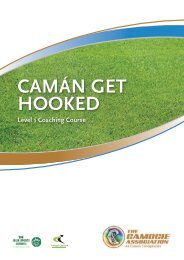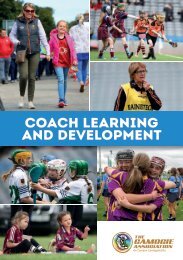You also want an ePaper? Increase the reach of your titles
YUMPU automatically turns print PDFs into web optimized ePapers that Google loves.
CHAPTER9
Communication
Good communication skills are vital tools for successful coaching. Every act of coaching involves
the coach in communicating.
Verbal Communication
‰ Speak clearly in a normal speaking voice.
‰ Make eye contact with the players.
‰ Use age appropriate language.
‰ Make sure every player can hear what is being said.
‰ Change the tone of voice occasionally for effect – speaking in a lower than usual tone
sometimes can be very effective in gaining players attention.
Non-Verbal Communication
‰ It has been estimated that over 60% of our communication is non-verbal.
‰ Every action of the coach has the potential to be an important non-verbal message to
the players.
‰ The coaches facial expressions, voice intonation, gestures, body position, use of arms
and hands etc can communicate a very positive or a very negative message to a player.
‰ It is imperative that the coach is aware of the subliminal impact of non-verbal messages
on players and to remember that what is communicated non verbally to players can be
as powerful as what is communicated verbally.
99











